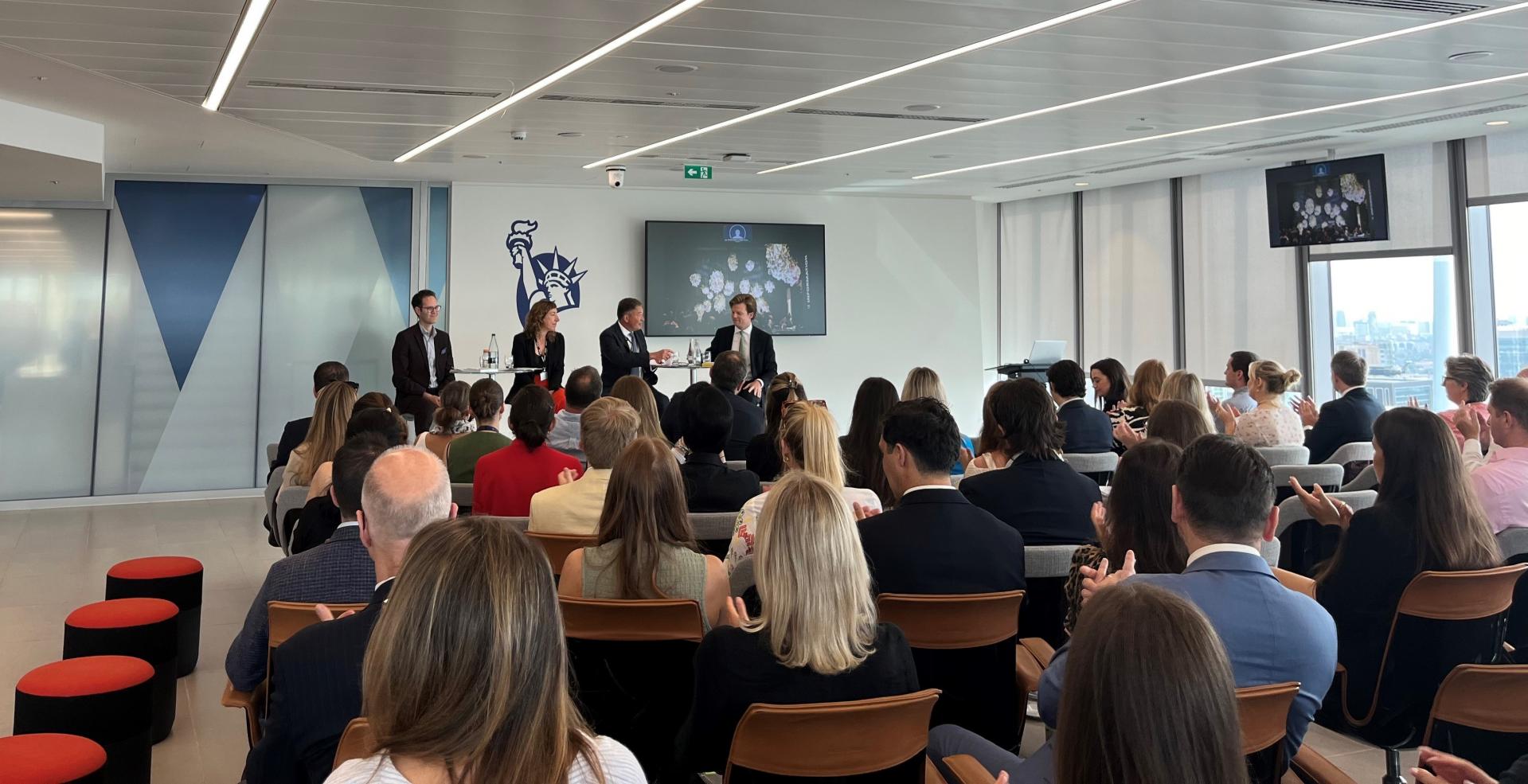We recently had the pleasure of hosting a panel discussion around the complex and often contentious issues surrounding the confiscation, restitution, and provenance of art, featuring prominent industry experts: Paul Hewitt (Director General at Society of London Art Dealers), Helen Mears (Head of Curatorship & Research at Royal Museums Greenwich), and Alexander Herman (Director at Institute of Art and Law).
In recent years, the international art market has faced heightened scrutiny over the acquisition and trade of certain types of artwork, driven by increasing demands for the restitution of art that was obtained during periods of colonisation or conflict. The response has varied. Many dealers and collectors have voluntarily returned pieces to their countries of origin, while others have seen their collections seized and returned by regulatory bodies. Since its establishment a decade ago, The New York Antiquities Trafficking Unit has recovered a staggering 4,600 items, ranging from antiques stolen during WWII and more recent conflicts in the Middle East.
Our panellists shared their insights into how the regulatory landscape is evolving to deal with these issues, and how museums, collectors, and dealers are responding to changes. The overarching message was clear: these issues are not as binary as the media often portrays them to be, and as attitudes continue to evolve, the industry is striving take a more conscientious approach.
Evolving regulatory landscape
When acquiring a piece of art, different jurisdictions impose various legal standards for transferring full ownership. However, as Alexander Herman pointed out, there are also ethical standards which should come into play during acquisitions – a factor not always covered by existing legal frameworks.
Efforts to integrate ethical standards into law have been made, such as the 1970 UNESCO convention, which set robust provenance standards to curb illicit trade in cultural property. These standards now require that any individual researching the original ownership and authenticity of a piece of artwork must go back at least as far as 1970, with the aim of protecting historical and cultural items from illicit trade.
Likewise, the EU is tightening regulations. A new regulation, set to come into effect next year, will impose strict due diligence requirements on art dealers. The new regulation mandates that owners obtain new import licences for certain archaeological items more than 250 years old originating from outside the EU. Again, these measures aim to safeguard cultural heritage while imposing significant compliance obligations on the industry.
Impact on the industry
As regulations have evolved, the art industry has had to move and adapt alongside them. As we heard from Paul Hewitt, the industry was at first somewhat hostile to new regulations, but in recent years we have witnessed something of a sea change. Collectors and dealers are increasingly open and sympathetic to them, recognising the importance of transparency and ethical responsibility.
As Helen Mears pointed out, due diligence is hard baked into museum policy and practices. However, with growing public interest in provenance, museums are becoming more proactive in sharing the histories of the items they have on display. This is nonetheless a challenging task, as the information required is not always easily available. In some cases, it might not even exist at all.
Similarly, Hewitt spoke of the anxiety pervading the art dealing industry in response to new EU legislation. The challenge lies, again, in sourcing the necessary documentation to secure the licenses needed to trade in the EU. Without these, dealers risk confiscation of their artworks.
Further complications arise from the varying legal title standards across different countries. What may be legally owned in the UK could lack recognised ownership in the US, a concept known as vulnerability of title. This discrepancy exposes dealers and collectors to the risk of confiscation when dealing art across borders.
How can the insurance industry help?
The insurance industry already plays a role in protecting dealers and collectors against the risk of confiscation, but our panellists explored the ways in which insurers might expand their role.
Alexander Herman contributed thoughts on how the insurance industry could play a role in covering the gap between ethical and legal standards. For instance, could insurers offer policies for collectors who choose to return art on ethical grounds, compensating for the financial loss?
Paul Hewitt also suggested that the insurance industry could act as a mediator between the art market and regulators. By participating in regulatory discussions, insurers could help craft standards that protect historical and cultural heritage, while allowing the art market to operate responsibly and sustainably.
The art world's future lies in balancing diverse interests and adapting to new standards that reflect a more conscientious approach to cultural property. The industry’s evolution over the next few years will be fascinating to watch. Meanwhile, the insurance sector has some food for thought – not to mention an intriguing opportunity – to define its role in this transformative period.

